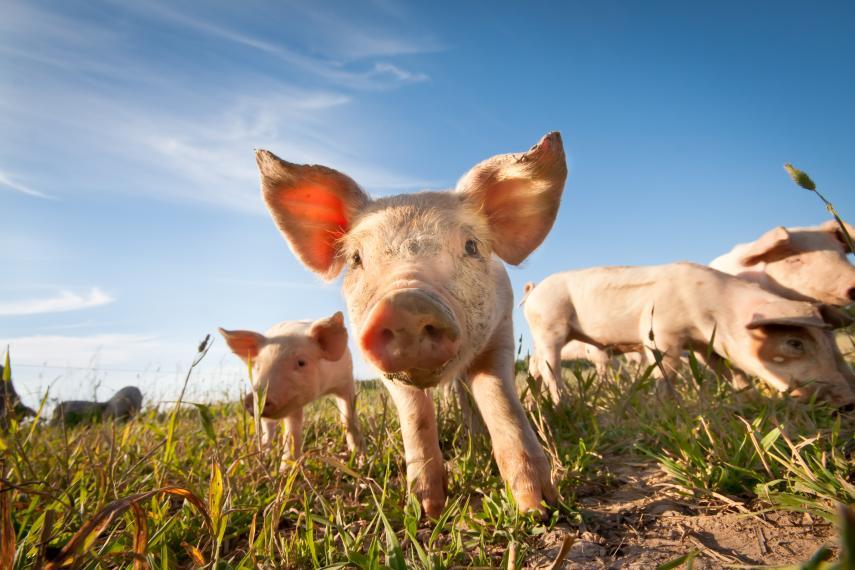Piggy Gene Bank

University of Guelph researchers investigate how to make selective pig breeding more affordable.
Pig farmers want to breed their ‘best’ livestock. This ‘selective breeding’ results in a larger proportion of offspring with desirable traits, including larger litter size, higher growth rate, and backfat thickness. Modern genomic techniques enable pig farmers to better understand their animals’ genetic makeup (i.e., high density genotyping). This information can be used by pig farmers to select optimal breeding partners and thus control which traits are passed to the next generation of pigs. However, genotyping an entire litter of piglets is too costly for many farmers because a female sow typically births 10 or more piglets at a time.
To address this problem, University of Guelph statistics professor Zeny Feng and her collaborators from the Department of Animal Biosciences are using mathematical models to improve the cost-effectiveness of pig genotyping. Specifically, the research team compared the effectiveness of different single nucleotide polymorphism (SNP) arrays at detecting differences within offspring traits. Geneticists use SNP arrays to find variations at single positions in DNA building blocks that can lead to observable differences of important traits in offspring. Highly detailed SNP arrays (that analyze up to 800,000 SNPs) are used to assess the DNA of a limited number of animals, whereas smaller SNP arrays (that analyze e.g., 300 SNPs) can be used to assess the DNA of a large number of animals. Smaller SNP arrays are cheaper; however, trait prediction becomes less accurate as fewer SNPs are analyzed. Traditionally, SNP arrays that analyze 60,000 SNPs are used in selective pig breeding. However, the research team found that a 1,500-SNP array could predict optimal trait inheritance with 85% accuracy. Thus, switching to smaller SNP arrays will enable farmers to selectively breed pigs with a similar degree of accuracy while significantly reducing costs.
“Using a smaller SNP panel will greatly decrease the cost of implementing genetic techniques in the selective breeding of pigs,” says Prof. Feng. “With reduced costs, more farmers can use genetics to better select breeding animals in the earlier stage and improve the overall quality of their livestock over several generations.”
This work was supported by the Natural Sciences and Engineering Research Council of Canada (NSERC).
Rocha da Cruz VA, Brito LF, Schenkel FS, Rojas de Oliveira H, Jafarikia M, Feng Z. Strategies for within-litter selection of piglets using ultra-low density SNP panels. Livestock Science. 2019. doi: 10.1016/j.livsci.2018.12.027